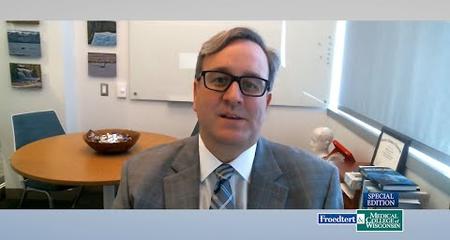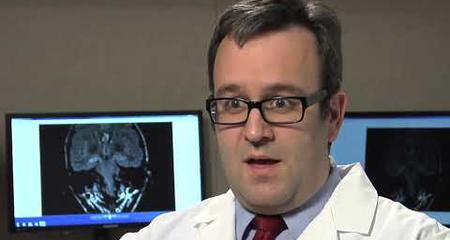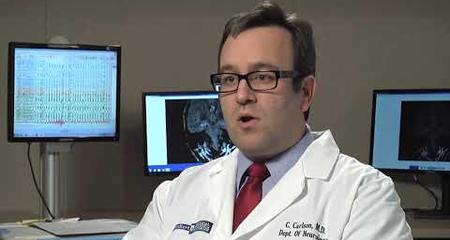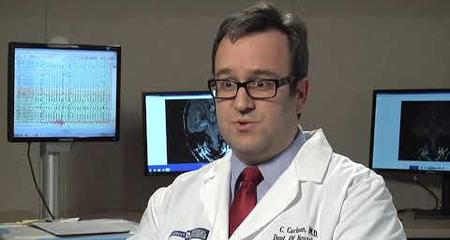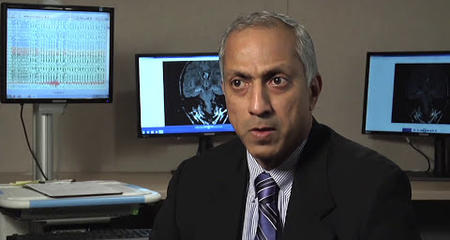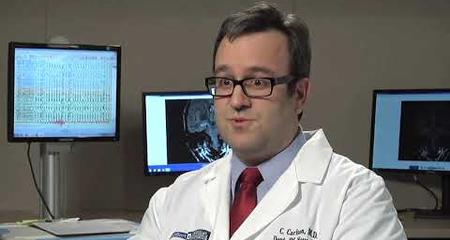Corrective surgery is another treatment option for some patients and the Comprehensive Epilepsy Program employs all of the latest, state-of-the-science techniques and strategies. Neurosurgeons with vast experience in epilepsy surgery provide their technical expertise and care.
Persistent seizures restrict patients' freedom and increase their risk of injury. In such cases (and when medications have been ineffective), surgery to remove brain areas causing seizures should be considered. For some patients whose seizures are resistant to medications, surgery may not be possible. For example, surgery may not be appropriate if seizures occur in brain locations that are functionally important — or example, areas that govern speech or movement. When surgery is not an option, patients may benefit from other treatments, including Vagus nerve stimulation or experimental trials of newer anti-epileptic medications.
In any surgical procedure, a detailed "map" of the brain is needed so that only the seizure-producing areas of the brain are removed. Cortical mapping is a highly accurate technique used by epilepsy neurosurgeons to localize both the region of the brain generating seizures as well as the areas that are responsible for thought and movement. For obtaining a map of the brain two techniques are used.
Our intraoperative MRI suite allows for high-resolution imaging during surgery to give us a view of the brain while we operate and minimize complications.
Deep Brain Stimulation to Treat Epilepsy
Deep brain stimulation (DBS) is the latest treatment option for patients living with epilepsy. Patients who are candidates for DBS will have tried at least three different medications without success. With DBS, a small neurostimulator is surgically placed under the skin in the chest to delivery therapy. It sends electrical impulses through leads that are implanted in both thalami of the brain.
Brain Mapping During "Awake" Surgery
The Comprehensive Epilepsy Program was one of the first facilities in the state to offer surgery for epilepsy patients while they are awake — an innovative method that allows the neurosurgeon to more precisely determine which brain tissue should be removed.
During "Awake" surgery where the brain is mapped during surgery with the help of the patient. During this highly sophisticated technique, the patient receives local sedation and actually responds during the procedure. The surgery exposes the part of the brain believed to be involved in the cause of the seizures. A neurosurgeon places electrodes directly on the brain to provide an accurate reading of the brain waves. The brain is then stimulated with electric current and the response is recorded. This pinpoints the origins of motor, language and sensory functions so the surgeon can avoid putting them at risk when removing the area that causes seizures. These areas remain untouched while areas causing seizures are removed.
Implanting Electrodes for Brain Mapping
Another method for brain mapping is done by implanting electrodes (grids) on the surface of the brain, bringing the patient out of surgery and completing the brain mapping at their bedside using the implanted electrodes for the stimulation process.
This type of surgery is very effective. Some patients experience complete freedom from seizures; for others, seizures are greatly diminished, so much so that they can reduce their medications.
